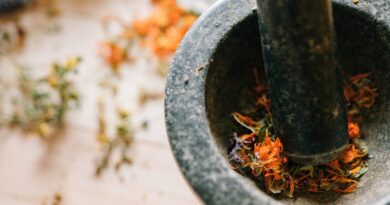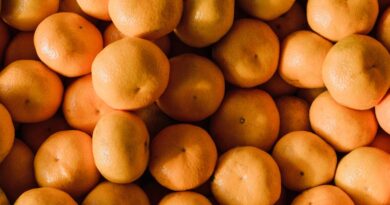Healing Foods for Chronic Pain Relief
Chronic pain is a prevalent issue that affects millions of people worldwide, impacting their quality of life and overall well-being. While traditional treatments like medication and physical therapy can help manage chronic pain, many individuals are turning to alternative methods, such as incorporating healing foods into their diet, to find relief. In this comprehensive guide, we will explore the role of healing foods in alleviating chronic pain, discussing their benefits, mechanisms of action, and practical applications.
The Link Between Diet and Chronic Pain

Research has shown that diet plays a significant role in the development and management of chronic pain conditions. Certain foods can either exacerbate inflammation and pain or help reduce these symptoms. By making conscious choices about what we eat, we can potentially alleviate chronic pain and improve our overall health and well-being.
Anti-Inflammatory Foods

One of the key mechanisms through which healing foods can help relieve chronic pain is by reducing inflammation in the body. Chronic inflammation is a common underlying factor in many pain conditions, such as arthritis, fibromyalgia, and migraines. Consuming anti-inflammatory foods can help mitigate this inflammation and reduce pain levels.
Some of the most potent anti-inflammatory foods include:
- Turmeric: Curcumin, the active compound in turmeric, has powerful anti-inflammatory properties and has been shown to be effective in reducing pain and stiffness in individuals with arthritis.
- Fatty fish: Omega-3 fatty acids found in fatty fish like salmon and mackerel have been linked to reduced inflammation and improved joint health.
- Berries: Berries such as blueberries, strawberries, and raspberries are rich in antioxidants that help combat inflammation and oxidative stress in the body.
Whole Grains and Complex Carbohydrates

Whole grains and complex carbohydrates are essential components of a pain-relieving diet. These foods provide a steady source of energy and help stabilize blood sugar levels, which can be beneficial for individuals dealing with chronic pain conditions like diabetes or fibromyalgia.
Some excellent sources of whole grains and complex carbohydrates include:
- Quinoa: Quinoa is a complete protein that also contains fiber and essential nutrients, making it a great choice for individuals looking to manage their pain through diet.
- Brown rice: Brown rice is a whole grain that is rich in fiber and vitamins, providing sustained energy and promoting gut health.
- Sweet potatoes: Sweet potatoes are a nutrient-dense root vegetable that is high in fiber, vitamins, and minerals, making them a great addition to a pain-relieving diet.
Herbs and Spices

Herbs and spices have been used for centuries for their medicinal properties and are now gaining recognition for their potential role in pain management. Many herbs and spices have anti-inflammatory, analgesic, and antioxidant properties that can help alleviate chronic pain and improve overall health.
Some herbs and spices known for their pain-relieving properties include:
- Ginger: Ginger has been shown to have anti-inflammatory and analgesic effects, making it a valuable tool in the management of pain conditions like arthritis and migraines.
- Garlic: Garlic contains compounds that can help reduce inflammation and oxidative stress in the body, potentially lowering pain levels in individuals with chronic pain.
- Cinnamon: Cinnamon has anti-inflammatory properties and can help regulate blood sugar levels, which is beneficial for individuals with chronic pain conditions like diabetes.
Probiotics and Gut Health
The gut-brain connection is a well-established concept that highlights the relationship between the gut microbiome and brain health. Research has shown that maintaining a healthy gut flora through the consumption of probiotic-rich foods can help reduce inflammation, improve immune function, and alleviate symptoms of chronic pain.
Some probiotic-rich foods that can benefit individuals dealing with chronic pain include:
- Yogurt: Yogurt is a rich source of probiotics that can help maintain a healthy gut microbiome and reduce inflammation in the body.
- Kefir: Kefir is a fermented dairy product that contains a variety of probiotic strains, making it a potent ally in promoting gut health and reducing pain.
- Sauerkraut: Sauerkraut is a fermented cabbage dish that is high in probiotics and can help support digestive health and reduce inflammation.
Hydration and Pain Relief
Staying hydrated is essential for overall health and well-being, but it can also play a role in managing chronic pain. Dehydration can exacerbate pain symptoms, while adequate hydration can help reduce inflammation, improve joint lubrication, and promote overall pain relief.
Some tips for staying hydrated and reducing pain include:
- Drink plenty of water throughout the day to stay hydrated and support your body’s natural healing processes.
- Avoid excessive consumption of caffeinated and sugary beverages, as they can contribute to dehydration and inflammation.
- Include hydrating foods like watermelon, cucumber, and celery in your diet to maintain optimal hydration levels.
Addressing Common Misconceptions
There are several misconceptions surrounding the role of diet in chronic pain management. While healing foods can play a significant role in alleviating pain symptoms, they are not a one-size-fits-all solution. It is essential to work with a healthcare provider or nutritionist to develop a personalized pain management plan that incorporates dietary changes along with other treatment modalities.
FAQs About Healing Foods for Chronic Pain Relief
Q: Can diet alone cure chronic pain?
A: While diet can play a significant role in managing chronic pain, it is usually not a standalone solution. A holistic approach that includes medication, physical therapy, and lifestyle modifications is typically recommended for optimal pain relief.
Q: Are there any foods that can worsen chronic pain symptoms?
A: Certain foods, such as processed foods, refined sugars, and trans fats, can exacerbate inflammation and pain symptoms in individuals with chronic pain conditions. It is essential to avoid these trigger foods and focus on whole, nutrient-dense options instead.
Q: How long does it take to see results from incorporating healing foods into my diet?
A: The timeline for experiencing pain relief through dietary changes can vary depending on the individual and the specific pain condition. It is essential to be patient and consistent with your dietary modifications and monitor your symptoms over time.
To Wrap Things Up
In conclusion, healing foods can be a valuable tool in the management of chronic pain, offering natural ways to reduce inflammation, improve overall health, and alleviate symptoms. By incorporating anti-inflammatory foods, whole grains, herbs and spices, probiotics, and staying hydrated, individuals can take proactive steps towards managing their pain and enhancing their quality of life. Remember, it is essential to consult with a healthcare provider or nutritionist before making significant dietary changes, especially if you have underlying health conditions or are taking medication. With the right approach and mindset, healing foods can be a powerful ally in your journey towards chronic pain relief.




